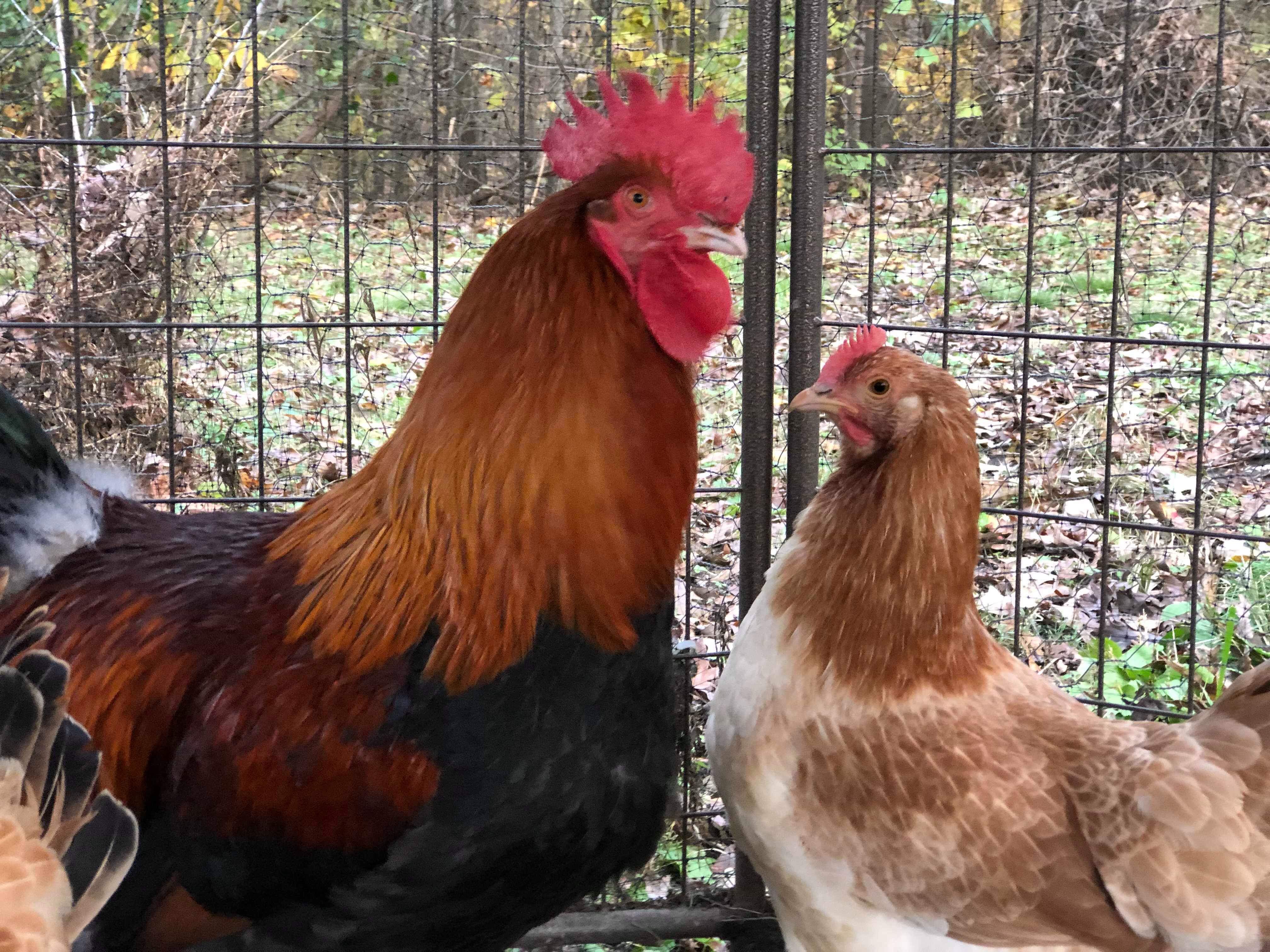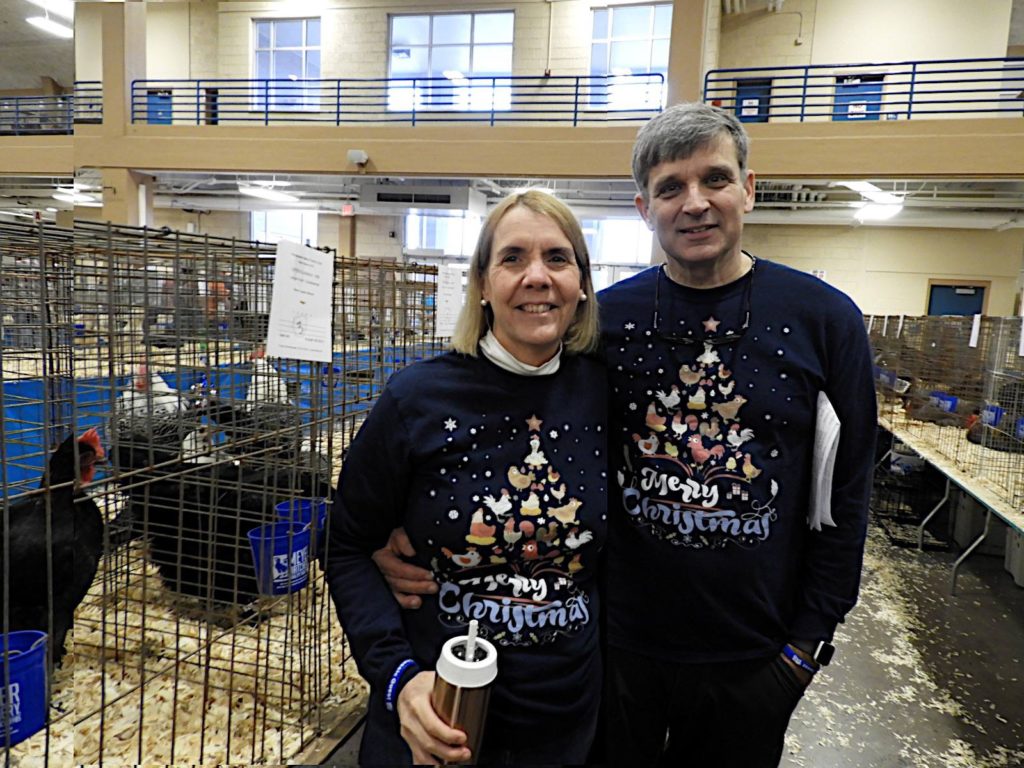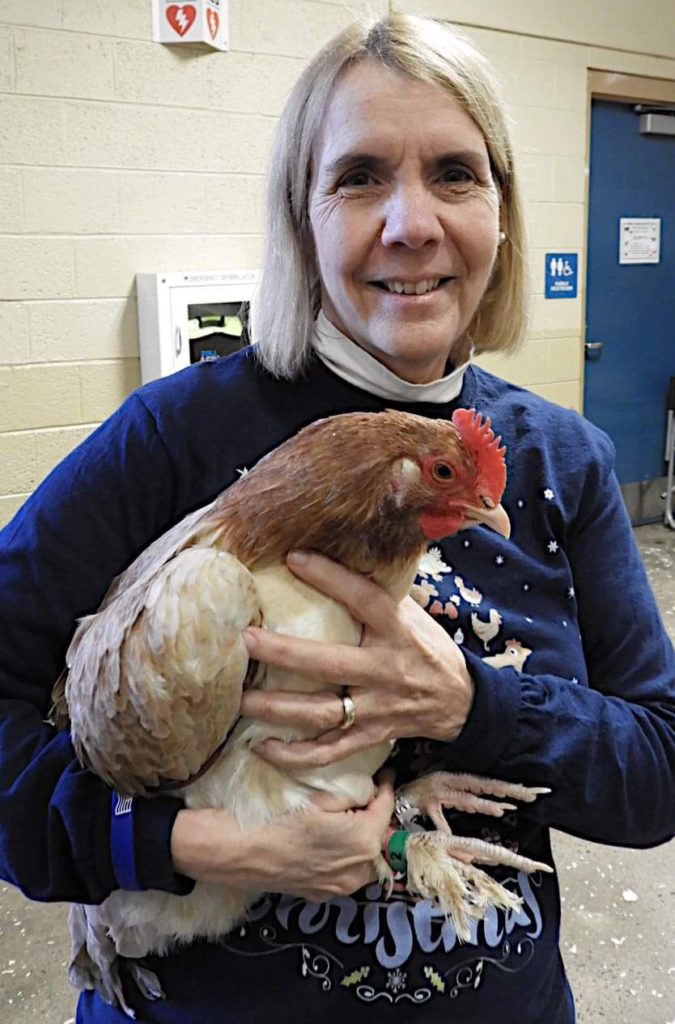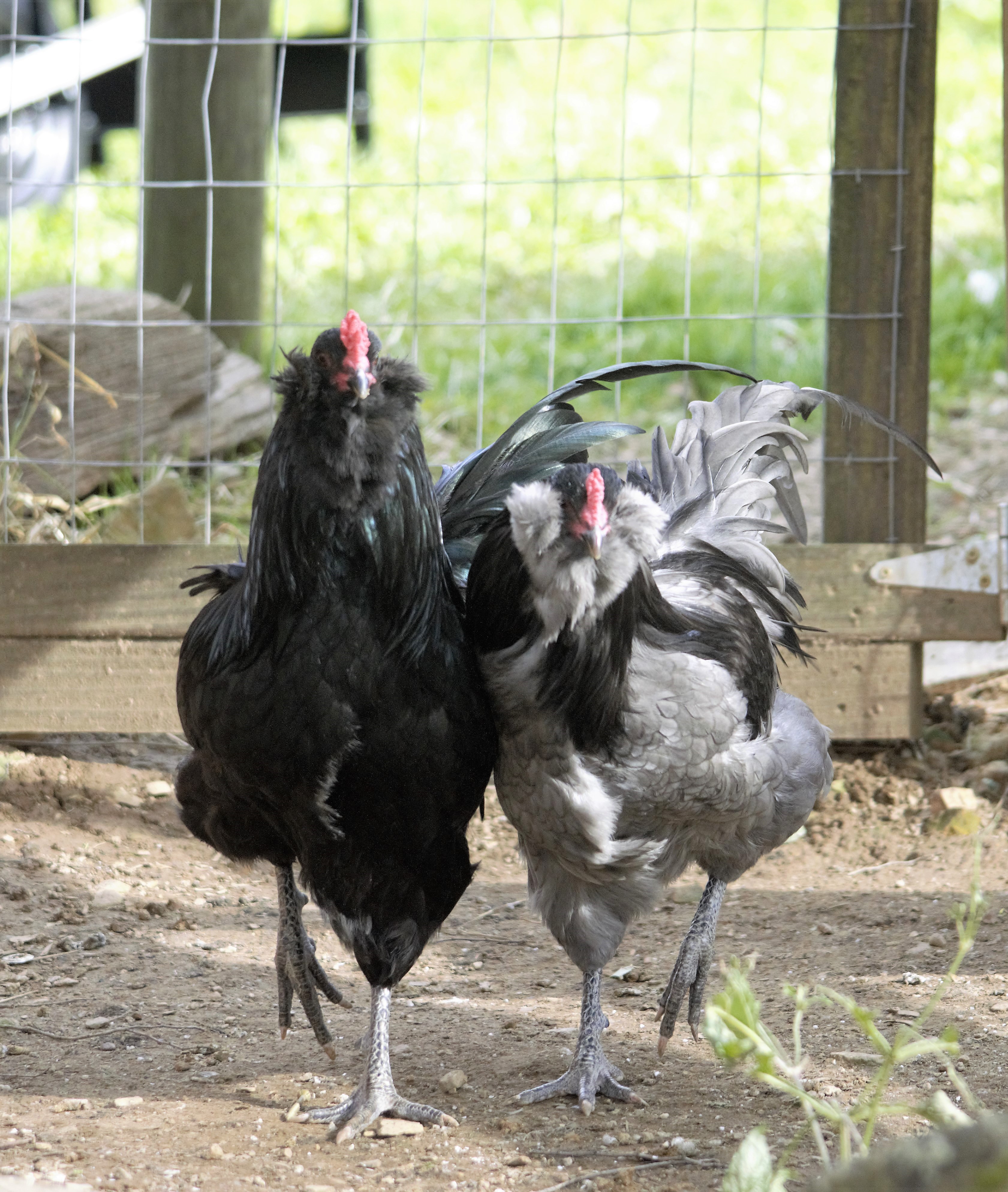
We have enjoyed breeding Black Copper Marans for years. We love their large, dark, almost chocolate colored eggs. We love their docile temperaments. But, we’ve been having trouble raising show-worthy cockerels. These are not supposed to have white underfluff, but ours somehow always do! So, this year, we decided we’d take a break from Black Coppers and try to raise Wheaten Marans. They have the same dark eggs and delightful temperaments, but white underfluff is no problem for them! I’ve been looking around for a source for show quality Wheaten Marans, and found a good one in Marans Unlimited, in Tx. That’s a long drive for me from WV, but luckily Bev and Sandy (the sister team who breeds these award-winning Wheaten Marans) agreed to bring some hatching eggs to a chicken show that we were both attending.
Did you know that they have chicken shows? They sure do, all over the country. Chicken fanciers bathe and condition their chickens for the shows, and when they get to the show, they spray and wipe their feathers with a silk scarf, and moisten their feet and combs with Vaseline. It’s pretty amazing to wander through a huge room full of varied and beautiful fowl of various sizes, shapes, and colors. (There’s a great documentary about the process of breeding and showing chickens entitled “Chicken People.” Find it and watch it if I’ve peaked your interest! It’s fascinating.)

This year, I went with my husband to the Dixie Classic, which is a major chicken show given annually each first weekend of December. The first of December happens to be our wedding anniversary: this year, number 39! I had been more sure than ever that I’d been blessed with the husband of my dreams when Scott agreed to take me to the Dixie Classic for our anniversary last year. We had a great time, and so decided to return this year. Not only did Scott take me to Knoxville for the weekend, but he even wore a matching chicken shirt to the show. What a guy!
We were to meet Bev and Sandy at Knoxville and get the precious Wheaten Marans eggs that they had promised to bring. We did indeed meet them there, and get the eggs, but God had a beautiful gift waiting for me at Knoxville. I also came home with a beautiful pair of young adult Wheaten Marans! We called the pullet “Anni” and the cockerel “Vern.” (Annivernsary, get it? 😉)
It all started when I saw Annie. She struck me as SO beautiful: balanced, with a wide tail spread (something that I’ve been working hard at in my lines) and clean, lovely plumage. She was also a Blue Wheaten, which is among my favorite color patterns. I found out who had brought her and said to her, “I want your pullet!!” Then, I quickly amended according to my original intent, “I mean, I want eggs from your pullet this spring!” She smiled sweetly and said, “I’ll let you have her!”
I was dumbfounded! After a few minutes more conversation, when she found I had no cockerel of age to breed to her, she decided to let me have the male that she had brought to sell, too. As you see in the picture above, they are a lovely pair.

And as you can see in the picture to the right, I am one happy gal to have been so blessed on my anniversary! Bev and Sandy were not sure the the fertility of the eggs they brought, since it’s the dead of winter and their birds aren’t laying well, so they gave me the eggs and they are now in the incubator. If all goes well, we’ll have Wheaten and Black Copper chicks hatching on Christmas Day. I’m grateful to be in the Marans Chicken Club of the USA, where I’ve found mentors and friends who are helping me to succeed with breeding quality chickens!



 When there is no blue gene present in the pair, any black markings will be normally colored (i.e. they will appear black)
When there is no blue gene present in the pair, any black markings will be normally colored (i.e. they will appear black)